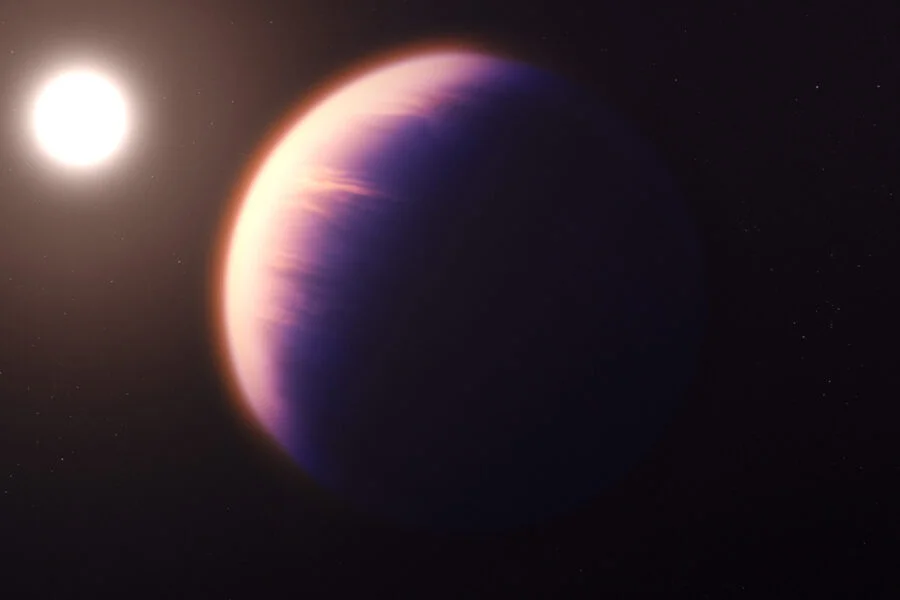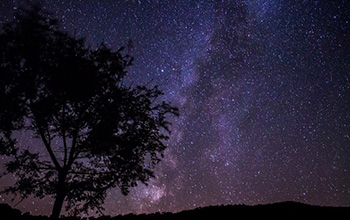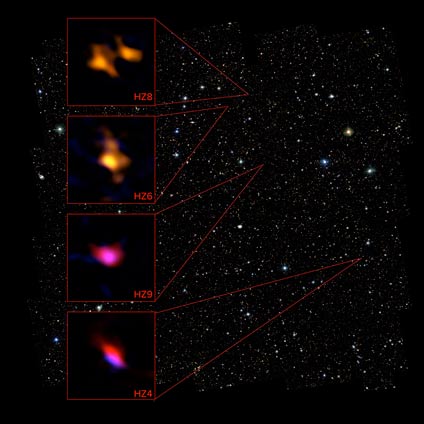搜索结果: 1-15 共查到“天文学 CARBON”相关记录22条 . 查询时间(0.109 秒)

Astronomers see carbon dioxide on planet outside solar system for first time(图)
詹姆斯韦伯 太空望远镜 系外行星 大气
2023/6/25

From stardust to pale blue dot:Carbon's interstellar journey to Earth(图)
From stardust pale blue dot Carbon interstellar journey Earth
2021/4/16
We are made of stardust, the saying goes. U.S. National Science Foundation-funded research at the University of Michigan reveals that the statement may be more true than we thought.The ...

Much of the carbon in space is believed to exist in the form of large molecules called polycyclic aromatic hydrocarbons, or PAHs. Since the 1980s, evidence has indicated that these molecules are abund...
Research by Rice University Earth scientists suggests that virtually all of Earth’s life-giving carbon could have come from a collision about 4.4 billion years ago between Earth and an embryonic plane...

ALMA Detects First Traces of Carbon ‘Smog’ Permeating Interstellar Atmospheres of Early Galaxies(图)
ALMA Detects First Traces Smog Permeating Interstellar Atmospheres Early Galaxies
2015/7/13
Astronomers study the elements scattered between the stars to learn about the internal workings of galaxies, their motion and chemistry. To date, however, attempts to detect the telltale radio signatu...
Depth profiling analysis of solar wind helium collected in diamond-like carbon film from Genesis
solar wind depth profile helium NASA Genesis mission post-ionization
2017/4/10
The distribution of solar-wind ions in Genesis mission collectors, as determined by depth profiling analysis, constrains
the physics of ion-solid interactions involving the solar wind. Thus, they pro...
Dust driven mass loss from carbon stars as function of stellar parameters - II. Effects of grain size on wind properties
AGB and post-AGB – Stars: atmospheres – Stars: carbon – Stars: circumstellar matter – Stars: evolution – Stars: mass loss –2 Hydrodynamics – Radiative transfer
2011/9/30
In this paper we explore grain size effects on wind properties of carbon stars, using a generalized description of radiative cross sections valid for particles of arbitrary sizes. The purpose of the s...
Excitation of the aromatic infrared emission bands: Chemical energy in hydrogenated amorphous carbon particles?
Excitation aromatic infrared emission bands: Chemical energy
2011/10/11
We outline a model for the heating of hydrogenated amorphous (HAC) dust via the release of stored chemical energy and show that this energy (~12 kJ/mole) is sufficient to heat dust grains of classical...
Stark Broadening of Carbon and Oxygen Lines in Hot DQ White Dwarf Stars: Recent Results and Applications
stars: atmospheric parameters – broadening: Stark
2011/10/9
White dwarf stars are traditionally found to have surface compositions made primarily of hydrogen or helium. However, a new family has recently been uncovered, the so-called Hot DQ white dwarfs, which...
The First Fluorine Abundance Determinations in Extragalactic AGB Carbon Stars
FluorineAbundance Determinations Extragalactic
2011/9/29
Fluorine (19F) abundances (or upper limits) are derived in six extragalactic AGB carbon stars from the HF(1-0) R9 line at 2.3358 mu in high resolution spectra. The stars belong to the Local Group gala...
HE 1015-2050: Discovery of a Hydrogen-deficient carbon star at high galactic latitude
HE 1015-2050 Hydrogen-deficient carbon star
2011/1/10
Medium resolution spectral analysis of candidate Faint High Latitude Carbon (FHLC) stars from Hamburg/ESO survey has given us the potential to discover objects of rare types. Two primary spectral char...
A Carbon-enhanced Metal-poor Damped Lyman alpha System: Probing Gas from Population III Nucleosynthesis?
galaxies abundances − galaxies evolution − quasars absorption lines quasars: individual J0035− 0918 − stars carbon − stars
2010/11/10
We present high resolution observations of an extremely metal-poor damped Ly
system, at zabs = 2.3400972 in the spectrum of the QSO J0035−0918, exhibiting an abundance pattern consistent with mo...
The impact of spatial fluctuations in the ultra-violet background on intergalactic carbon and silicon
methods: numerical intergalactic medium quasars absorption lines
2010/11/12
Spatial inhomogeneities in the spectral shape of the ultra-violet background (UVB) at the tail-end of He II reionisation are thought to be the primary cause of the large fluctuations observed in the H...
A Spitzer/IRS spectral study of a sample of galactic carbon-rich proto-planetary nebulae
Solar and Stellar Astrophysics (astro-ph.SR)
2010/12/27
Recent infrared spectroscopic observations have shown that proto-planetary nebulae (PPNs) are sites of active synthesis of organic compounds in the late stages of stellar evolution. This paper present...
Relaxing the Small Particle Approximation for Dust-grain opacities in Carbon-star Wind Models
Solar and Stellar Astrophysics (astro-ph.SR)
2010/12/23
We have computed wind models with time-dependent dust formation and grain-size dependent opacities, where (1) the problem is simplified by assuming a fixed dust-grain size, and where (2) the radiation...


